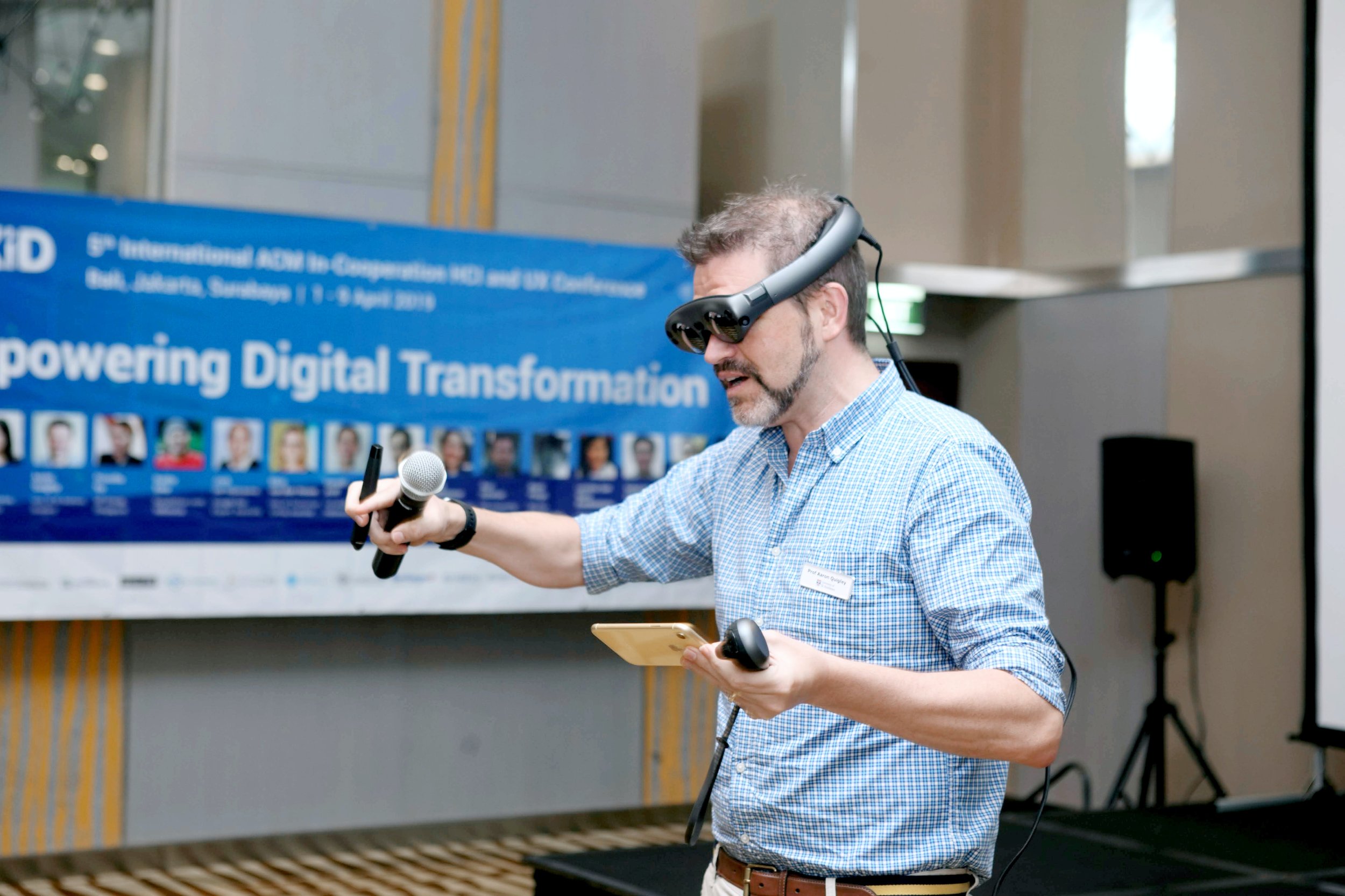3 Trends Driving the Need for Customer Closeness Research
Pioneering brands are successful because they intimately understand and meet both the needs and desires of their customers. Deep understanding and customer empathy enables great brands to deliver products, services or experiences that both delight their customers and help the brand achieve profitability, longevity and, in some cases, cultural impact.
When it comes to understanding your customers, most brands rely on third party data, surveys or consumer segmentations for insights to drive strategy and fuel innovation. But with the ripple effects of the pandemic still transforming "normality", brands that rely on pre-covid assumptions - or insights from before the cost of living crisis - are at risk of making investment decisions on unreliable data.
With so much change happening at an increasingly rapid pace, the need for brands to deeply understand their customers has never been more important.
Consequently, we have seen a significant increase in customer closeness research briefs over the past 6 months. When we analysed the drivers of this research we surfaced a number of common themes.
This post shares the 3 dominant themes that are heightening the need for customer closeness research.
Brand Loyalty
The first theme is Brand Loyalty. In an era of extreme uncertainty, knowing your customers well and providing the right products and services for them does not necessarily guarantee these customers will stay loyal to your brand.
There are a few reasons why. First, the current and fiercely competitive landscape means every brand must keep on its toes and take nothing for granted. Every brand is fighting to survive and the competition across every category is fierce.
Secondly, cultural relevance, compounded by the lightning speed virality of social media, can throw up situations or alter what's fashionable in a matter of days. The cultural landscape is shifting at a rate never seen before. Brands must stay constantly tuned in to what’s happening in the world and triangulate this with the values their customers hold dear.
Finally, with respect to pricing, consumers will walk up and down the high street or browse furiously online before making any purchase decisions. The ubiquity of e-commerce means that, with a smartphone double tap, a consumer can quickly switch to an alternative product or retailer for a cheaper price, faster delivery or better refund terms.
In a nutshell, brand loyalty is dynamic, transient and needs to be constantly earned. Brand loyalty involves continuous grind, agility, adaptability and evolution in both marketing, product innovation and customer experience.
So how can you research brand loyalty?
Researching the changing needs and desires of customers is key. Although segmentations, analytics or third party data will provide you with some insights i.e. what customers say they care about, need or want, they will never tell you why.
To understand the whys, brands must now get to know the people behind the pie charts. Brands need to shift from viewing their customers as personas to understanding their customers as people.
To enable this shift to deeper understanding and customer closeness, an increasing proportion of our clients are turning to qualitative research methods like mobile diary studies to research and sense check brand loyalty.
“Brands need to shift from viewing their customers as personas to understanding their customers as people. ”
Using Mobile Diary Studies as a tool for brand loyalty research
Mobile Diary studies are also powerful for researching brand loyalty or conducting shopper experience research. In-the-moment consumer diaries or shopper diaries allow brands to capture consumer needs, behaviours and experiences in real world contexts. The qualitative insights that consumer diaries surface are used to both challenge or validate existing assumptions, personas and segmentations.
The context rich, multimedia insights that diary studies produce are also massively impactful at both getting leadership to act and at encouraging teams to become more customer centric.
When brands can achieve the culture change needed to align their entire organisation around customer centricity, the chances are that the products, services and experiences that a brand delivers will have the utility, experience and impact to strengthen and sustain brand loyalty.
Digital Transformation and Omnichannel
Without doubt, the most dominant trend of late has been Digital Transformation. Reflecting on the first twenty years of this century, the digitisation of everything has been relentless. One minute, the dot com era was the answer to brands’ commercial success. Before we knew it Web 2.0 was in the spotlight and social media changed everything.
Notwithstanding all of the above, covid seems to have further supercharged the rate of digital transformation in the past few years.
And now, we are beginning to see and experience the rise of a new era, Web 3.0. In and amongst all of these changes sits the consumer.
Digital transformation and constantly changing consumer behaviours go hand-in-hand.
Wholeheartedly, consumers have adopted new ways to communicate with one another, and new ways to interact with the brands they love.
With so much change going on for brands as a result of digital transformation, one trend is constant: omni-channel.
Consumers are more informed now than ever before. They have never had so much information available to them at the tap of a screen. Deciding between one brand or another can simply come down to a single product review.
Although analytics, logs and receipts data will tell you what your customer did or did not purchase, they will never tell you why.
What are the best methods to research Digital Transformation?
Using traditional research approaches to understand customer behaviours in an increasingly digital and omni-channel normal is near to impossible. To properly research the impacts of digital transformation, brands must embrace the digital transformation of research.
This involves the adoption of digitally enabled research methodologies such as Diary Studies and Digital Ethnography.
“To properly research the impacts of digital transformation, brands must embrace the digital transformation of research.”
Gen Z and Sustainability
Generation Z - a generation determined for societal and political change. A generation of digital natives, and a generation that holds less brand loyalty than Millenials, Gen X, and Boomers. In a recent Forbes article, data provided by Alter Agents highlights that “Only 37% of Gen Z fell into the loyalist category, defined as those who bought a product from the same brand they were considering at the start of the shopping journey” Forbes.
Gen Z are now coming into their own, and without doubt, will (and for many brands are) be a driving force for change in everything from marketing campaigns (check out Gucci and TikTok) to subtle variations in app design specs. For example, Spotify’s “Wrapped” feature has different design aesthetics that appeal to different generations.
“Design-wise, the soft pastel colour palette appeals to Millennials, while the bold, collage-like aesthetic and ironic tone of voice taps into Gen Z youth culture” Kantar on Gen Z & Spotify
For Gen-Z, sustainability and brand loyalty go hand in hand.
The impact Gen Z has on brands also extends beyond just providing them with products they need, and experiences they expect - but also reaches to core values that this generation holds. This is certain for brands that prioritise sustainability.
Sustainability & Brand Loyalty
According to a 2022 survey, over 90% of Gen Z consumers base their brand loyalty on shared values. Over 80% of Millennial consumers also reported that they are more inclined to be more loyal to a brand whose values align with theirs Ometria. There is an array of articles and reports that provide similar data.
A brand becomes more aware about its environmental impacts and takes action - action that is aligned with consumers' shared values - will create a stronger and positive relationship with its customers.Brand
The overarching theme is this - our understanding of brand loyalty is evolving.
So when we think about brand loyalty, maybe the question is not so much about, how can we retain our customers? Instead, maybe brands should be asking…
“Do we really know who our customers are, and how well do we know them”?
For Indeemo, we more often than work as the tool to help bridge the gap between consumers and brands and in doing so, augment existing data sets.
Indeemo can ultimately punch through the walls of abstraction and analytics that separate brands from the actual humans they serve and reveal the unknowns ’ behaviours, and values they hold dear to them.
With an ever-evolving world with rapid advancements in digitisation, the strength of brand loyalty can be attributed to the degree organisations know their core audience.
Using Indeemo as a tool for Customer Closeness research
Yes, you may already “know” your customer, but do you know and understand their environment, relationships and day to day routines? We are starting to see more clients seeking answers to these questions. And the approach, or even, the philosophical approach they are taking is one that will improve their understanding of their customers.
This really is quite simple, and Indeemo is here to help make it easier for you and your team to get a 360 degree view of those that you design products for. Getting to know your customer can simply involve you finding key moments in their day-to-day lives that will resonate with your team, and your brand.
There are three main components where Indeemo can help you reconnect with your customers.
Get Closer to your Customers
We work with clients that aim to repair any disconnect they may have with their customers. Indeemo works in a way that provides you with direct access to the lives and behaviours of your customers. When a team watches a two minute video of a respondent showing them around their home office, or a three minute screen recording of a teen accessing a new mobile gaming app - there is instant connectivity. There’s this moment of realisation that often gets missed through various research approaches. Indeemo can break down the barrier of a quant survey and add layers of context to CX and UX research.
2. Learn Faster by being agile
Indeemo allows you to be agile and capture contextual insights in the moment. The idea being that you can use Indeemo’s Diary Study, Mobile Ethnography or Path-to-Purchase research tools to perform an array of research methods quickly - be it omnichannel experiences, decision journeys, or in-store shopping behaviours, we find that many agendas draw out insights quickly for agile teams.
3. Improve your Understanding of brand loyalty
When your team completes a project with Indeemo, and walks away with one or many unknowns uncovered about the customer experience, this is a success. And it can only have a positive impact on the next phase of your project. For you and your team of researchers, Indeemo is here to simply help you improve your understanding of those who use your product, experience or service. Every video diary entry counts. Every photograph counts, and every screen recording of user behaviour will only increase your understanding of your customers and what brand loyalty really means to them.
Let us support your next Customer closeness Research project
You might think that such an approach requires significant investment and time. You’d be surprised how quickly and easily you can fire up a consumer closeness project.
Studies can run from 1 day to 1 week to 1 month and you can produce compelling insights with as few as 10 participants.
If you’d like to learn more about how Indeemo can support you or your clients’ needs, please get in touch. At Indeemo we are supporting more projects that are inherently consumer centric. So, with this in mind, how can Indeemo help you and your team bridge the gap between your customers and your brand?









